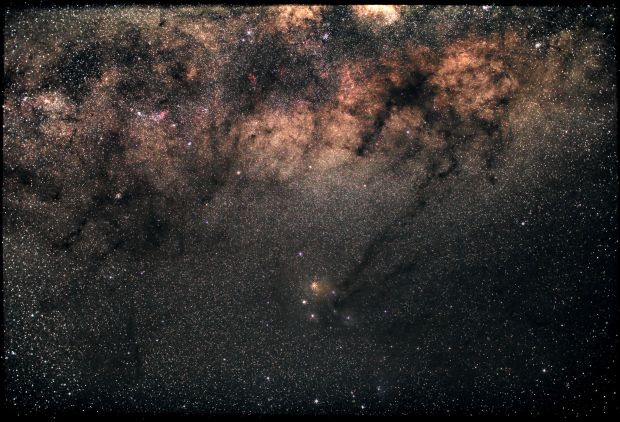Australian photographers are in for a treat throughout May as the Earth swings past the planet Mars – marking its closest visit to our fair country since 2005.
Not only will the giant be passing close by, it will be bright as well – briefly achieving a dazzling magnitude of minus 2. As a comparison, the full moon shines at magnitude minus 13. (The lower the magnitude, the brighter the object.)
South of the equator for much of May, Mars will be found in the constellation Scorpius, the most spectacular part of the Milky Way. As a bonus, Australia's position on the earth means the planet will also be high in the sky – hopefully creating clear, uninterrupted views.
It's a rare combination that just about presents a 'perfect storm' for astrophotography, believes Associate Professor Jonti Horner, an astronomer at the University of Southern Queensland. He says the event is as good as it gets for people who love looking to the sky. “If you want to dabble in astrophotography, May is a great time to give it a go,” he adds.
There's a few different things you can try if you want to capture Mars and the night sky this May.
“One is to try some shorter exposures, say 20 seconds or so, and take a few different shots, then stack the images in photoshop,” says Horner.
Longer exposures can lead to star trails – a cool effect on it's own. If you want to take photos of the sky without the trails, you'll need to track the stars to counteract the rotation of the earth. “You can buy a star tracker, which is lined up with the sky,” explains Horner. “It allows for much longer shutter speeds.”
In the city or in the country, it's possible to capture the planet. “Star trail photos work well in the city,” says Horner. “Mars will be in the East at sunset, and then make it's way across the sky at night before setting at dawn in the west. This can be useful to know if you want to try and frame the planet in front of some of our famous landmarks.”
Away from the city, star field photos will work best, and can easily be shot using a basic prime lens, like a 50mm using a 20 second exposure. Just make sure you check the stars are sharp. “It's easy to do – set your lens to infinity and use your cameras rear LCD to zoom in to the closest star, then focus manually until you're happy it's sharp,” explains Horner.
The best period to view the planet will be from about 18 May to 3 June. However for Australians, Mars will be almost overhead at midnight on 22 May, when it's nearly directly opposite the Sun.
And fret not if you had visions of a Martian apocalypse and War of the Worlds style destruction with Mars coming so close – the giant planet will still be a sizable 75.3 million kilometres away.

Jonathan Horner's image of the Milky Way running through the constellation Crux Australis (the Southern Cross). To the top of the image, the third brightest star in the night sky, and closest naked-eye star to the Solar system, Alpha Centauri shines brightly, The dark patch in the Milky Way just next to the Southern Cross is known as the 'Coal Sack', a dark cloud of gas and dust that obscures the light from the stars beyond - leaving a noticeable 'void' in the Milky Way, that is easily seen with the unaided eye on a clear, dark night.
100 individual 30 second exposures, which were corrected by the removal of dark and bias frames, then stacked and processed.

Jonathan Horner's image of a view towards the heart of the constellation Scorpius, and the centre of our galaxy, the Milky Way. The bright orange star, just below the centre of the image, is Antares, the brightest star in Scorpius - and currently seen in the night sky shining brightly near Mars. Of the two, Mars is significantly brighter - but both shine redly to the east in the evening sky.
34 images, stacked and processed, taken with a 50mm lens.



